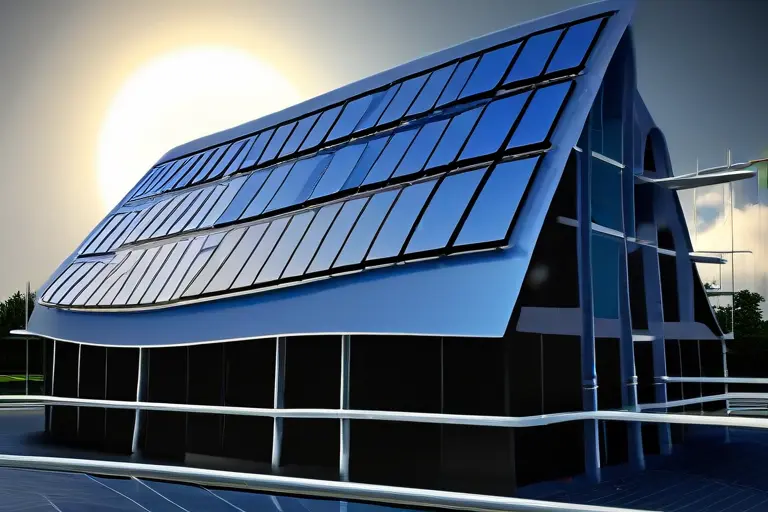Case Study: Transforming a Marin County Hillside into a Sustainable Sanctuary
Dive deep into our award-winning Marin County project, exploring the challenges, solutions, and innovative techniques used to create this eco-friendly residence.

Case Study: Transforming a Marin County Hillside into a Sustainable Sanctuary
When the Johnson family approached us with their vision for a sustainable family home on a challenging Marin County hillside, we knew this project would push the boundaries of eco-friendly design. The result is a 3,200 square foot residence that has become a model for sustainable hillside construction.
Project Overview
Location: Marin County, California Size: 3,200 square feet Completion: 2023 Certifications: LEED Platinum, Living Building Challenge Petal Recognition Awards: AIA California Council Award for Sustainable Design (2023)
The Challenge
The site presented several significant challenges:
Topographical Constraints
- Steep slope: 35-degree incline requiring careful foundation planning
- Soil stability: Seasonal moisture changes affecting ground conditions
- Access limitations: Narrow road restricting material delivery
- View preservation: Maintaining sight lines for neighboring properties
Environmental Considerations
- Fire risk: High wildfire danger zone requiring defensible space
- Water scarcity: Limited municipal water supply
- Wildlife corridors: Protecting migration paths for local fauna
- Native vegetation: Preserving existing oak and madrone trees
Regulatory Requirements
- Setback restrictions: Limited building envelope
- Height limitations: Maximum 28-foot height restriction
- Septic constraints: On-site wastewater treatment requirements
- Coastal Commission: Additional environmental review processes
Design Solutions
Our team developed innovative solutions that turned challenges into opportunities:
Site-Responsive Architecture
Terraced Design
We created a series of terraced levels that follow the natural contours of the hillside:
- Upper level: Private bedrooms and master suite
- Main level: Open-plan living, dining, and kitchen
- Lower level: Guest suite and utility spaces
- Landscape terraces: Native plant gardens and outdoor living spaces
Minimal Site Disturbance
- Pier foundation system: Reduces excavation and preserves root systems
- Prefabricated components: Minimizes on-site construction time
- Crane delivery: Materials lifted over existing vegetation
- Temporary access roads: Restored to natural state post-construction
Sustainable Material Selection
Reclaimed Redwood Structure
- Source: Deconstructed San Francisco warehouse (circa 1920)
- Treatment: Natural oil finishes, no chemical preservatives
- Carbon benefit: Prevented 15 tons of CO2 emissions from landfill decomposition
- Aesthetic value: Rich patina and character impossible to replicate
Local Stone Integration
- Sonoma fieldstone: Sourced within 50 miles of the site
- Dry-stack walls: Traditional technique requiring no mortar
- Thermal mass: Passive solar heat storage and release
- Landscape integration: Walls extend into garden design
High-Performance Glazing
- Triple-pane windows: R-7 insulation value
- Low-E coatings: Reduces heat gain while maintaining views
- Operable sections: Natural ventilation reduces mechanical cooling needs
- Locally manufactured: Supporting regional glass industry
Water Management Systems
Rainwater Harvesting
- Collection area: 2,400 square feet of roof surface
- Storage capacity: 5,000-gallon underground cistern
- Filtration system: Multi-stage treatment for potable use
- Overflow management: Directed to landscape infiltration areas
Greywater Recycling
- Laundry-to-landscape: Direct irrigation of fruit trees
- Bathroom sinks: Filtered for toilet flushing
- Shower water: Constructed wetland treatment system
- Kitchen greywater: Separate treatment due to grease content
Stormwater Management
- Permeable paving: Reduces runoff by 60%
- Bioswales: Natural filtration of surface water
- Retention ponds: Temporary storage during heavy rains
- Native plantings: Deep roots prevent erosion
Energy Systems
Passive Solar Design
- Building orientation: Maximizes winter sun, minimizes summer heat
- Overhangs: Calculated for seasonal sun angles
- Thermal mass: Stone floors store and release heat
- Natural ventilation: Stack effect cooling through operable skylights
Renewable Energy
- Solar photovoltaic: 8kW system with battery storage
- Solar hot water: Evacuated tube collectors
- Micro-hydro: Small turbine in seasonal creek
- Net-zero performance: Produces more energy than consumed annually
Construction Process
Phased Approach
The construction was carefully phased to minimize environmental impact:
Phase 1: Site Preparation (2 months)
- Temporary access road construction
- Utility connections and septic installation
- Foundation pier drilling and concrete work
- Erosion control measures implementation
Phase 2: Structure (4 months)
- Reclaimed timber frame assembly
- Structural insulated panel (SIP) installation
- Roofing and weatherization
- Stone wall construction
Phase 3: Systems (3 months)
- Electrical and plumbing rough-in
- HVAC system installation
- Solar panel and battery system setup
- Water treatment system commissioning
Phase 4: Finishes (3 months)
- Interior finish work with natural materials
- Landscape installation and native plant establishment
- Final inspections and system testing
- Client education and handover
Innovative Techniques
Crane-Assisted Construction
- Reduced site impact: Materials lifted over sensitive areas
- Precision placement: Minimal handling and waste
- Time efficiency: Faster assembly reduces construction duration
- Worker safety: Eliminates need for heavy equipment on steep slopes
Prefabrication Benefits
- Quality control: Factory conditions ensure precision
- Weather independence: Interior work continues during rain
- Waste reduction: Optimized cutting and minimal on-site waste
- Speed: Faster assembly reduces neighborhood disruption
Performance Results
Energy Performance
After one year of occupancy, the home has exceeded performance expectations:
- Net energy production: 15% surplus annually
- Heating costs: 80% reduction compared to conventional homes
- Cooling costs: 90% reduction through passive design
- Hot water: 100% solar-heated year-round
Water Conservation
- Potable water use: 40% reduction through efficiency measures
- Irrigation needs: 70% reduction through native landscaping
- Stormwater runoff: 85% reduction through site design
- Greywater recycling: 60% of household water reused
Indoor Environmental Quality
- Air quality: Consistently excellent ratings from continuous monitoring
- Natural lighting: 95% of spaces receive adequate daylight
- Acoustic comfort: Superior sound insulation from natural materials
- Thermal comfort: Stable temperatures year-round with minimal mechanical systems
Lessons Learned
Design Insights
- Early stakeholder engagement: Involving neighbors and regulators from the start
- Flexible design process: Adapting to site discoveries during construction
- Material lead times: Planning for longer delivery schedules for sustainable materials
- System integration: Coordinating multiple sustainable systems requires careful planning
Construction Challenges
- Weather delays: Seasonal rains extended timeline by 6 weeks
- Material quality: Some reclaimed materials required additional processing
- Skilled labor: Finding craftspeople experienced with natural materials
- Code compliance: Working with officials unfamiliar with innovative techniques
Client Education
- System operation: Training homeowners on complex sustainable systems
- Maintenance schedules: Establishing routines for optimal performance
- Monitoring tools: Providing dashboards for energy and water tracking
- Seasonal adjustments: Teaching adaptive use of passive systems
Environmental Impact
Carbon Footprint
- Embodied carbon: 60% reduction through material choices
- Operational carbon: Net-negative through renewable energy production
- Transportation: 40% reduction through local material sourcing
- Waste diversion: 95% of construction waste recycled or reused
Ecosystem Benefits
- Habitat creation: Native landscaping supports 40+ bird species
- Soil health: Improved through organic matter and mycorrhizal networks
- Water quality: On-site treatment improves runoff quality
- Biodiversity: Increased plant and animal diversity post-construction
Economic Analysis
Initial Investment
- Premium costs: 18% above conventional construction
- Payback period: 8 years through energy savings
- Property value: 25% increase in appraised value
- Insurance benefits: Reduced premiums for fire-resistant design
Long-term Value
- Maintenance costs: 30% lower than conventional homes
- Utility costs: 85% reduction in annual energy bills
- Health benefits: Reduced healthcare costs from improved indoor air quality
- Resilience value: Independence from utility disruptions
Future Considerations
Adaptive Capacity
The design includes provisions for future needs:
- Electric vehicle charging: Pre-wired for multiple charging stations
- Battery expansion: Space and electrical capacity for additional storage
- Accessory dwelling unit: Foundation prepared for future addition
- Climate adaptation: Design resilient to changing weather patterns
Technology Integration
- Smart home systems: Infrastructure for future automation
- Monitoring expansion: Capability for additional sensors and controls
- Grid integration: Prepared for vehicle-to-grid and other emerging technologies
- Material upgrades: Designed for easy replacement with future innovations
Conclusion
The Marin County Hillside Sanctuary demonstrates that sustainable architecture can successfully address complex site challenges while creating beautiful, high-performance homes. The project's success lies in its integrated approach, combining passive design strategies with active systems and careful material selection.
Key success factors include:
- Collaborative design process involving all stakeholders
- Site-responsive architecture that works with natural systems
- Integrated sustainable systems that complement each other
- Quality construction using skilled craftspeople
- Comprehensive client education for optimal performance
This project has become a model for sustainable hillside development, inspiring similar projects throughout the Bay Area and beyond. It proves that environmental responsibility and architectural excellence are not just compatible—they're synergistic.
Project Team
Architecture: Terra Verde Architecture Structural Engineering: Green Structure Engineering Landscape Architecture: Native Habitat Design General Contractor: Sustainable Building Collective Solar Installation: Bay Area Solar Solutions Water Systems: Integrated Water Design
Ready to create your own sustainable sanctuary? Contact Terra Verde Architecture to discuss how we can bring innovative sustainable design to your project.

Sarah Thompson
Design Director focused on residential design and interior integration. Specialist in passive solar design.
Ready to Start Your Sustainable Project?
Let's discuss how we can bring these sustainable design principles to your next project.
Get Started Today